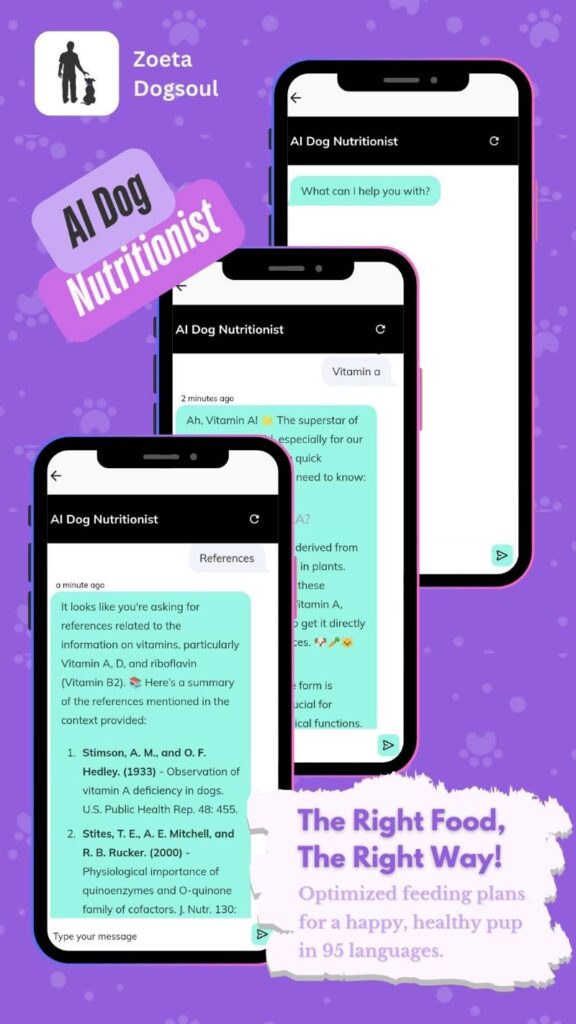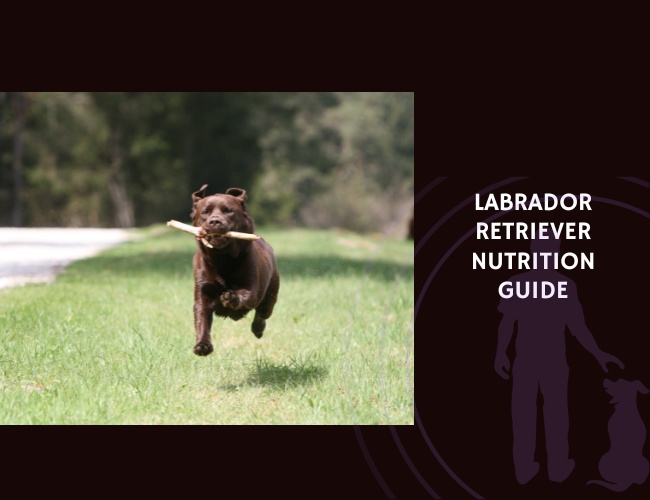Your Labrador Retriever bounds toward their food bowl with unbridled enthusiasm – that signature Lab appetite that makes them such food-motivated companions. But beneath that eager expression lies a complex metabolic system with unique nutritional requirements. Whether you’re welcoming a bouncy Lab puppy into your home or caring for a distinguished senior, understanding your furry friend’s specific dietary needs forms the foundation of their lifelong health and happiness.
From their sporting dog heritage to their genetic predispositions, Labrador Retrievers present distinct nutritional challenges and opportunities. Let us guide you through the science and heart of feeding your Lab well, ensuring every meal supports their vibrant, loyal nature.
Breed-Specific Metabolism & Digestive Traits
Understanding Your Lab’s Metabolic Engine
Did you know that your Labrador’s metabolism runs differently than other breeds? Research reveals fascinating insights into how these beloved companions process energy. Male Labs typically exhibit higher metabolic rates than females, while intact dogs burn calories faster than their neutered counterparts. This metabolic uniqueness means your Lab’s dietary needs are as individual as their personality.
Key metabolic factors include:
- Age variations: Younger Labs maintain higher metabolic rates, gradually slowing as they enter their golden years
- Body composition matters: Lean muscle mass positively correlates with metabolism, while excess fat actually slows it down
- Temperature sensitivity: Your Lab burns more calories maintaining body temperature in extreme weather conditions
The average Labrador maintains a basal metabolic rate of approximately 130 kcal/kg^0.75 – but this number tells only part of the story. Environmental factors, activity levels, and individual genetics create a metabolic fingerprint unique to your dog.
Digestive Efficiency: A Double-Edged Sword
Labrador Retrievers possess remarkably efficient digestive systems – a trait that served their ancestors well during long days of waterfowl retrieval. However, this efficiency comes with a caveat: Labs can extract maximum calories from their food, contributing to their notorious tendency toward weight gain.
Your Lab’s digestive tract processes nutrients quickly and thoroughly, meaning:
- They absorb calories more effectively than many other breeds
- Food sensitivities may manifest rapidly
- Portion control becomes especially critical
The Obesity Tendency: A Genetic Reality
Perhaps no breed exemplifies the phrase “food motivated” quite like the Labrador Retriever. But there’s science behind that pleading expression at dinnertime. Genetic research has identified specific variations in Labs that affect:
- Appetite regulation: Many Labs carry a gene mutation affecting satiety signals
- Food-seeking behavior: Enhanced motivation to find and consume food
- Weight gain predisposition: Particularly pronounced in chocolate Labs
Understanding this genetic tendency isn’t about accepting obesity as inevitable – it’s about working with your Lab’s biology to maintain optimal health. 🧡
Macronutrient Requirements
Protein: Building Blocks for an Active Life
Your Labrador’s protein needs reflect their working dog heritage. These natural athletes require quality protein to maintain their muscular build and support their energetic lifestyle. But protein requirements aren’t one-size-fits-all:
Life stage protein guidelines:
- Puppies (8 weeks – 12 months): 28-32% dry matter basis for rapid growth
- Adult maintenance (1-7 years): 22-26% for everyday health
- Working/highly active Labs: 26-30% to support muscle recovery
- Seniors (7+ years): 25-28% to prevent muscle loss
Quality matters as much as quantity. Look for named meat sources (chicken, salmon, lamb) as primary ingredients, ensuring your Lab receives complete amino acid profiles for optimal health.
Fat: Fuel for the Labrador Engine
Fat serves multiple crucial roles in your Lab’s diet – from providing concentrated energy to supporting that glossy coat Labs are famous for. However, balancing fat intake requires careful consideration given the breed’s obesity tendency.
Optimal fat percentages vary by life stage:
- Growing puppies: 12-15% to support development
- Adult Labs: 10-14% for maintenance
- Senior dogs: 8-12% to manage weight while maintaining energy
The type of fat matters tremendously. Omega-3 and omega-6 fatty acids work in harmony to:
- Reduce inflammation (especially important for joint health)
- Support cognitive function
- Maintain skin and coat health
- Boost immune system efficiency
Carbohydrates: The Controversial Component
While dogs don’t require carbohydrates in the same way they need protein and fat, these nutrients play important roles in your Lab’s diet. The key lies in choosing the right types and amounts.
Beneficial carbohydrate sources include:
- Complex carbs: Sweet potatoes, brown rice, oats
- Fiber sources: Pumpkin, green beans, carrots
- Limited simple carbs: Avoid excessive corn, wheat, or white rice
Remember, your Lab’s carbohydrate tolerance is individual. Some thrive on moderate carb levels, while others do better with minimal amounts. Watch for signs of digestive upset or weight gain when adjusting carbohydrate content.
Micronutrient Profile
Essential Vitamins for Labrador Health
Your Lab’s vitamin needs encompass both fat-soluble (A, D, E, K) and water-soluble (B-complex, C) varieties. Each plays specific roles in maintaining optimal health:
Critical vitamins for Labs include:
- Vitamin A: Supports vision and immune function – especially important for aging Labs
- Vitamin D: Essential for calcium absorption and bone health
- Vitamin E: Powerful antioxidant protecting against cellular damage
- B-complex vitamins: Support energy metabolism and nervous system health
Natural food sources typically provide adequate vitamins when feeding a balanced diet. However, certain life stages or health conditions may warrant supplementation under veterinary guidance.
Minerals: The Framework of Health
Mineral balance proves especially critical for Labrador Retrievers, given their predisposition to skeletal issues like hip dysplasia. The calcium-phosphorus ratio during growth particularly impacts long-term joint health.
Key mineral considerations:
- Calcium and Phosphorus: Maintain a ratio of 1.2:1 to 1.5:1
- Zinc: Supports immune function and wound healing
- Selenium: Works with Vitamin E as an antioxidant
- Iron: Essential for oxygen transport
Over-supplementation poses as many risks as deficiency. Trust complete and balanced commercial foods or work with a veterinary nutritionist for homemade diets.
Trace Elements: Small but Mighty
Though required in tiny amounts, trace elements like copper, manganese, and iodine play oversized roles in your Lab’s health. These micronutrients support everything from coat color to thyroid function.
Signs of trace element imbalance might include:
- Dull, brittle coat
- Slow wound healing
- Lethargy or weakness
- Poor growth in puppies
Hungry. Happy. Hefty.
Appetite is instinct, not indulgence.
Labradors don’t just like food—they’re biologically wired to crave it. Their genetics drive relentless hunger, not bad manners. A true Lab doesn’t overeat because they’re greedy. They do it because their brain tells them they’re never full. Understanding this shifts the blame from behaviour to biology—and it’s the first step to feeding them right.
Energy burns faster than it builds.
Behind the wagging tail is a machine built for movement. Labs burn through calories when they work, play, or train—but too often, their food intake outpaces their output. That imbalance invites obesity, joint stress, and energy crashes. Nutrition isn’t just fuel; it’s the control panel for their entire system.



Balance is a lifelong act.
From bounding puppies to slow-moving seniors, Labs need nutritional decisions tailored to each phase of life. It’s not about feeding less—it’s about feeding smarter. Macronutrients, meal timing, supplements—every detail matters when you’re managing a breed that loves life, loves food, and relies on you to get the balance right.
Common Food Sensitivities & Intolerances
Recognizing Food Reactions in Your Lab
While Labrador Retrievers generally boast robust digestive systems, food sensitivities can develop at any life stage. Understanding the difference between allergies and intolerances helps you respond appropriately:
Food allergies involve immune system responses and typically manifest as:
- Chronic ear infections
- Excessive paw licking
- Skin irritation and hot spots
- Recurring digestive upset
Food intolerances reflect digestive system limitations and often cause:
- Gas and bloating
- Loose stools or diarrhea
- Vomiting
- General discomfort after eating
Common Culprits and Solutions
The most frequent food sensitivities in Labs involve:
- Proteins: Beef, chicken, dairy
- Grains: Wheat, corn, soy
- Additives: Artificial colors, preservatives
Identifying problem ingredients requires patience and systematic approach. An elimination diet, conducted under veterinary supervision, remains the gold standard for diagnosis. Start with a novel protein and carbohydrate source your Lab has never eaten, then gradually reintroduce ingredients to identify triggers.
Remember, food sensitivities can develop over time – what worked for years might suddenly cause problems. Stay observant and responsive to your Lab’s changing needs. 🐾
Life Stage Adjustments
Puppy Nutrition: Building a Strong Foundation
Your Labrador puppy’s nutritional needs during their first year lay the groundwork for lifelong health. This critical period demands precise nutrition to support their rapid growth without encouraging developmental problems.
- Controlled growth rate: Avoid overfeeding to prevent skeletal issues
- Frequent meals: 3-4 times daily until 6 months, then twice daily
- Appropriate calcium levels: Not too high to prevent developmental orthopedic disease
- DHA supplementation: Supports brain and vision development
Monitor your puppy’s body condition weekly. You should easily feel their ribs with gentle pressure, and they should have a visible waist when viewed from above.
Adult Maintenance: Prime Years Nutrition
Adult Labs (1-7 years) require balanced nutrition that maintains their ideal weight while supporting their active lifestyle. This stage often presents the greatest challenge in weight management, as their efficient metabolism meets decreased activity levels.
Adult feeding strategies:
- Measure portions precisely – no “eyeballing”
- Account for training treats in daily calorie totals
- Consider puzzle feeders to slow eating and provide mental stimulation
- Adjust portions seasonally based on activity levels
Senior Support: Golden Years Nutrition
As your Lab enters their senior years (typically around age 7), their nutritional needs shift significantly. Metabolism slows, activity decreases, and age-related health concerns emerge.
- Joint support: Glucosamine, chondroitin, and omega-3 fatty acids
- Digestive health: Increased fiber and probiotics
- Cognitive function: Antioxidants and medium-chain triglycerides
- Kidney support: Moderate protein levels with high biological value
Reproductive Nutrition: Supporting New Life
Breeding Labs require specialized nutrition during pregnancy and lactation. Caloric needs can increase by 25-50% during late pregnancy and up to 300% during peak lactation.
Key reproductive nutrition points:
- Gradual transition to puppy food during last trimester
- Free-choice feeding during lactation
- Calcium supplementation only under veterinary guidance
- Monitor body condition to prevent excessive weight loss

Breed-Specific Health Risks with Nutritional Relevance
Hip Dysplasia: Nutritional Management Strategies
Hip dysplasia affects many Labrador Retrievers, but nutrition plays a crucial role in management and prevention. While genetics determine susceptibility, environmental factors including diet significantly impact severity.
Nutritional interventions include:
- Weight management: Every extra pound stresses vulnerable joints
- Anti-inflammatory nutrients: Omega-3 fatty acids reduce joint inflammation
- Appropriate mineral balance: Proper calcium-phosphorus ratios during growth
- Joint supplements: Glucosamine and chondroitin for cartilage support
Early intervention through nutrition can dramatically improve quality of life for dysplastic dogs.
Bloat Prevention Through Feeding Practices
Gastric dilatation-volvulus (bloat) represents a life-threatening emergency more common in deep-chested breeds like Labs. While not entirely preventable, specific feeding practices reduce risk:
Bloat prevention strategies:
- Feed multiple small meals rather than one large meal
- Use elevated feeders with caution (controversial)
- Implement slow-feeding bowls or puzzle feeders
- Avoid exercise for one hour before and after meals
- Monitor for early signs: restlessness, drooling, unsuccessful vomiting attempts
Pancreatitis: The Hidden Dietary Danger
Labs’ love of food sometimes leads to dietary indiscretion, potentially triggering pancreatitis. This painful inflammation of the pancreas often results from high-fat meals or table scraps.
Preventive nutrition includes:
- Consistent, moderate-fat diet
- Strict avoidance of table scraps
- Gradual diet transitions
- Emergency plan for suspected pancreatitis
Heart Health: The DCM Concern
Recent investigations into diet-associated dilated cardiomyopathy (DCM) particularly concern Lab owners. While research continues, current recommendations include:
- Choose diets with adequate taurine levels
- Consider grain-inclusive options from established manufacturers
- Monitor for symptoms: lethargy, coughing, exercise intolerance
- Discuss any diet concerns with your veterinarian
Recommended Feeding Methods & Diet Types
Comparing Feeding Philosophies
Each feeding method offers unique benefits and challenges for Labrador owners:
Commercial Kibble:
- Pros: Convenient, balanced, affordable, long shelf life
- Cons: Processing may reduce some nutrients, quality varies widely
- Best for: Most Lab owners seeking convenience and reliability
Canned/Wet Food:
- Pros: Higher moisture content, often more palatable
- Cons: More expensive, shorter shelf life once opened
- Best for: Senior Labs or those with dental issues
Raw Feeding:
- Pros: Mimics ancestral diet, often improves coat condition
- Cons: Food safety concerns, requires careful balancing
- Best for: Dedicated owners with freezer space and preparation time
Home-Cooked Diets:
- Pros: Complete control over ingredients, can accommodate sensitivities
- Cons: Time-intensive, requires veterinary nutritionist consultation
- Best for: Labs with multiple food sensitivities or specific health conditions
Feeding Schedules That Work
Your Lab’s feeding schedule impacts more than just hunger – it affects behavior, training success, and overall health:
Recommended schedules by age:
- 8-12 weeks: 4 meals daily
- 3-6 months: 3 meals daily
- 6+ months: 2 meals daily
- Senior dogs: May benefit from 3 smaller meals
Consistency matters more than exact timing. Establish a routine your Lab can depend on, reducing anxiety and food-guarding behaviors.
Smart Supplementation
While complete and balanced diets theoretically provide all necessary nutrients, certain supplements may benefit your Lab:
Evidence-based supplements include:
- Fish oil: For coat health and inflammation reduction
- Probiotics: Supporting digestive health
- Joint supplements: For at-risk or affected dogs
- Multivitamins: Only if dietary gaps exist
Always consult your veterinarian before starting supplements – more isn’t always better, and some combinations can be harmful.
Practical Guidelines for Owners
Daily Feeding Best Practices
Transform mealtime from a rushed necessity into a health-promoting ritual:
Creating positive feeding experiences:
- Use puzzle feeders to engage your Lab’s problem-solving abilities
- Practice “wait” commands before meals to reinforce training
- Monitor eating speed – Labs often inhale food dangerously fast
- Create calm environment free from competition or stress
Addressing Common Feeding Challenges
For the perpetually hungry Lab:
- Add low-calorie vegetables to increase meal volume
- Use food-dispensing toys throughout the day
- Ensure adequate protein and fiber for satiety
- Rule out medical causes for excessive hunger
For the picky eater (rare but possible):
- Warm food slightly to enhance aroma
- Add small amounts of low-sodium broth
- Establish regular meal times with food removal after 15 minutes
- Investigate potential dental or health issues
Transitioning Foods Successfully
When changing your Lab’s diet, patience prevents digestive upset:
7-day transition schedule:
- Days 1-2: 75% old food, 25% new food
- Days 3-4: 50% old food, 50% new food
- Days 5-6: 25% old food, 75% new food
- Day 7: 100% new food
Monitor stool quality throughout – slow the transition if digestive upset occurs.
Weight Management Strategies
Given Labs’ genetic predisposition to obesity, proactive weight management is essential:
Monthly weight checks should include:
- Hands-on body condition scoring
- Weight tracking with same scale
- Adjustment of portions based on changes
- Honest assessment of treat consumption
Remember, preventing weight gain proves far easier than achieving weight loss in food-motivated Labs.
Conclusion: Nourishing Your Lab’s Best Life
Your Labrador Retriever’s nutritional needs reflect their unique blend of working dog heritage, genetic predispositions, and individual characteristics. From their efficient metabolism to their boundless enthusiasm for food, every aspect of Lab nutrition requires thoughtful consideration and ongoing adjustment.
The journey of feeding your Lab well extends far beyond filling their bowl. It’s about understanding their biological needs, recognizing their individual preferences, and adapting to their changing life stages. Whether you’re measuring kibble for a bouncing puppy or selecting joint supplements for a distinguished senior, each nutritional choice impacts your faithful companion’s quality of life.
Is your current feeding plan truly meeting your Lab’s needs? Take time this week to evaluate their body condition, energy levels, and overall health. Consider scheduling a nutritional consultation with your veterinarian to ensure your feeding strategy aligns with your Lab’s unique requirements. After all, proper nutrition forms the foundation of those tail-wagging years ahead – and your devoted Labrador deserves nothing less than the very best. 🧡










